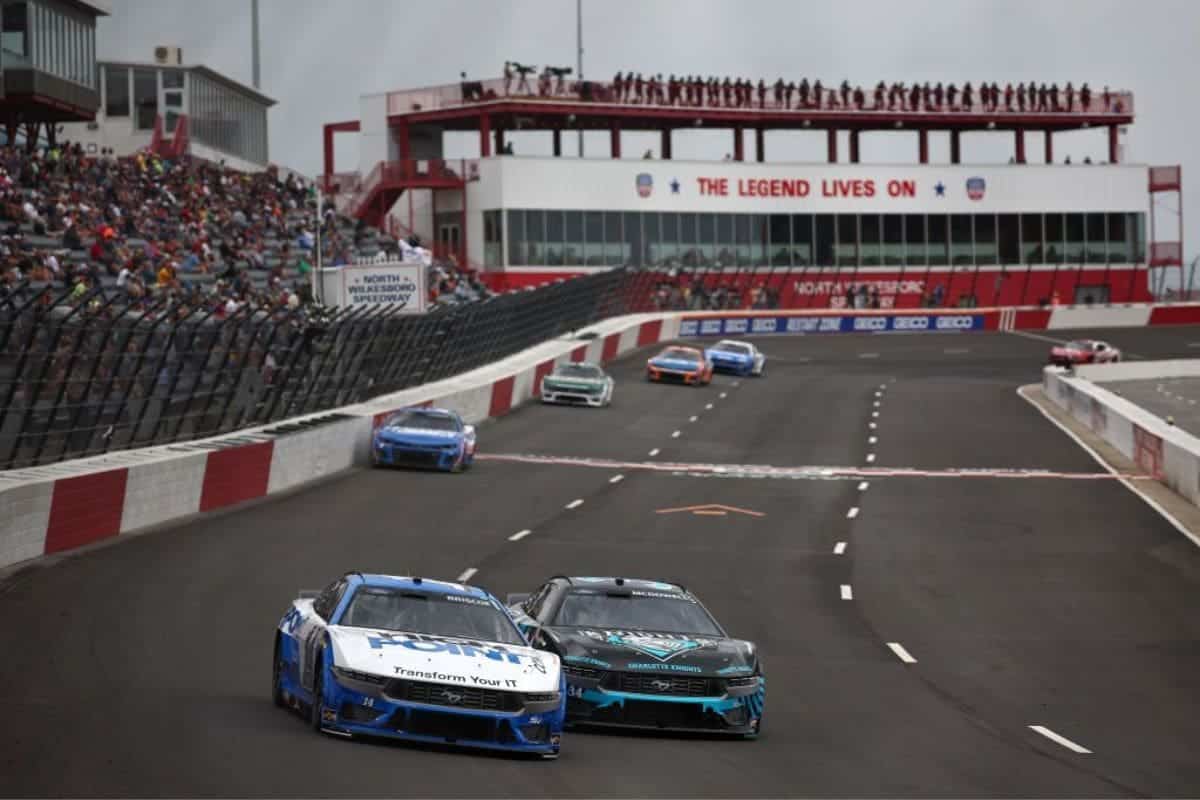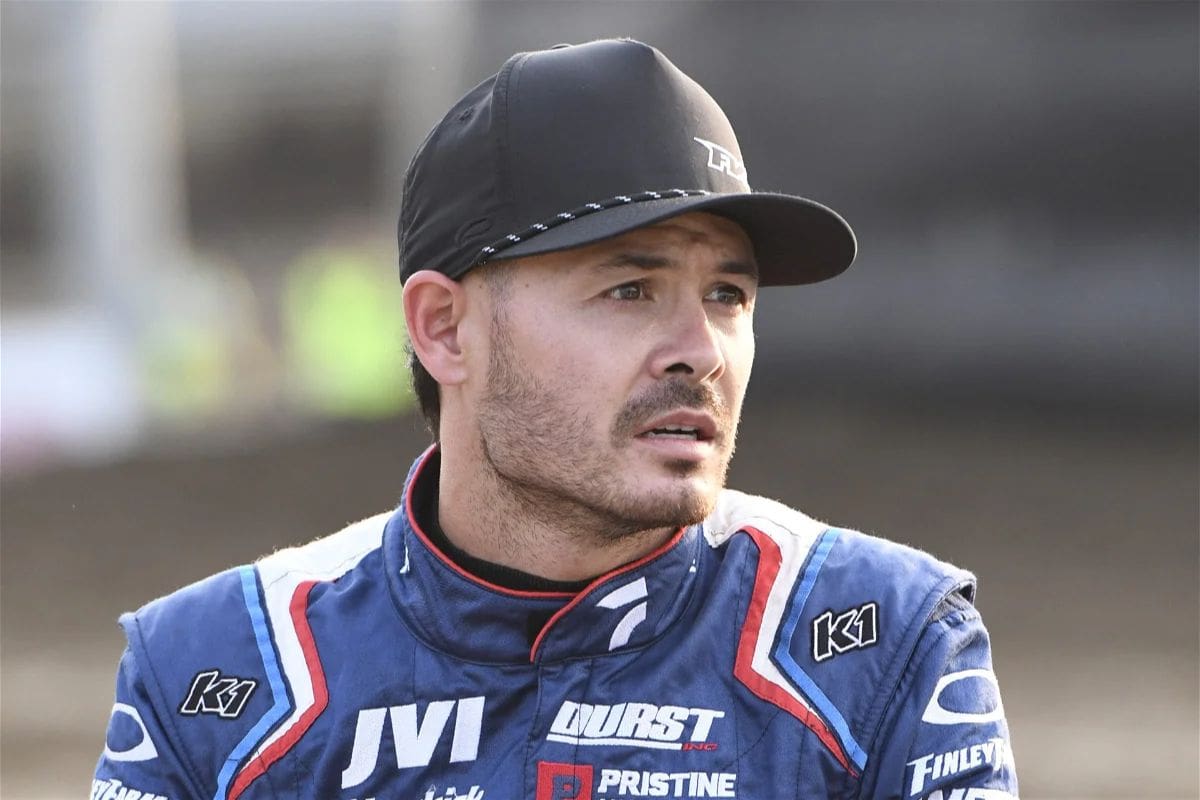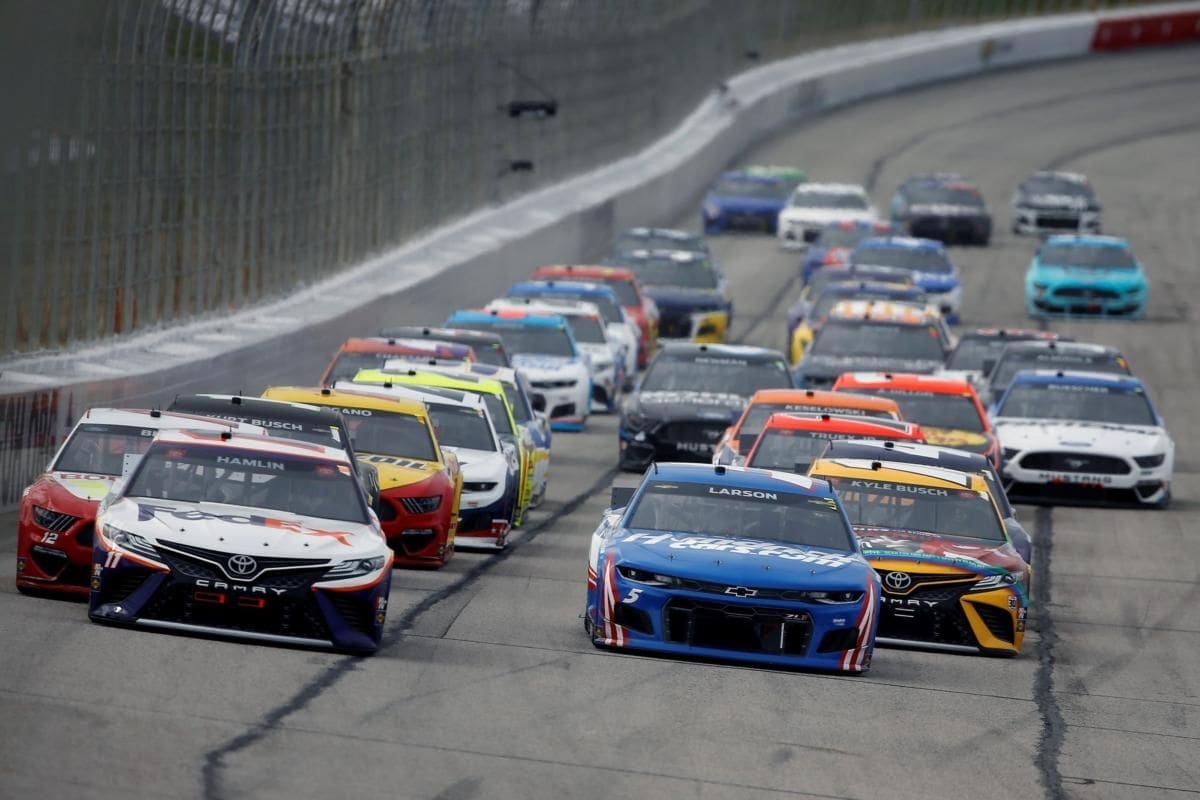Understanding NASCAR Playoff Waiver: The NASCAR Playoff Waiver has emerged as an essential topic within the motorsport community, particularly in the context of Kyle Larson‘s recent absence due to his participation in the prestigious Indy 500. This situation raises important questions about eligibility criteria and the broader implications for NASCAR’s playoff qualification process. As stakeholders weigh in, opinions diverge on whether granting Larson a waiver aligns with the sport’s competitive integrity and future precedents. The outcome of this debate will not only determine Larson’s playoff fate but may also redefine the rules governing NASCAR’s most critical competitions. How will NASCAR balance tradition with evolving circumstances?
Key Takeaways
- NASCAR playoff waivers allow drivers to remain eligible for playoffs despite missing races due to unforeseen circumstances, such as injuries.
- A single race victory guarantees playoff entry, though waivers may be granted for absences impacting point standings.
- Kyle Larson’s waiver request stems from missing the Coca-Cola 600 due to a weather delay at the Indy 500.
- The debate on Larson’s waiver centers on whether voluntary choices like prioritizing another race should receive the same leniency as injuries.
- NASCAR officials’ decision on Larson’s waiver will set a precedent affecting future interpretations of the waiver rule.
NASCAR Playoffs
The NASCAR Playoffs, introduced in 2004 and expanded in 2016 to include the Xfinity and Truck Series, serve as a dynamic championship format that heightens competition across NASCAR’s national series. This groundbreaking structure, originally known as the Chase for the Cup, was designed to maintain fan engagement and raise the stakes as the season progresses.
The inception of the playoff system marked a significant shift from the traditional points-based championship, where accumulation over an entire season determined the victor. Instead, the playoffs introduced a segmented format, ending in a series of elimination rounds that whittle down the field to a final group of contenders.
In 2016, the expansion of the playoff system to the Xfinity and Truck Series integrated a uniform structure across NASCAR’s primary divisions, reinforcing the consistency and comparability of competition. Each series now follows a similar format, featuring multiple rounds and a decisive final race that determines the season champion.
The NASCAR Playoffs have thus revolutionized the sport by infusing a heightened level of strategy, intensity, and drama. As drivers navigate the demands of elimination rounds, fans are treated to a thrilling spectacle that encapsulates the essence of competitive racing.
Qualification Process and Structure
Securing a spot in the NASCAR Playoffs requires drivers to navigate the 26-race regular season, where consistent performance and victories are paramount. The NASCAR Cup Series calendar features a total of 36 races, but only the initial 26 determine eligibility for the playoffs. Out of these, 16 drivers earn the playoff berths, creating a competitive landscape where each race can have a substantial impact on the standings.
According to NASCAR’s rulebook, a single victory during the regular season guarantees a driver’s entry into the playoffs. However, if fewer than 16 drivers secure wins, the remaining slots are filled based on regular season points.
Below is an overview of the qualification process:
| Criteria | Description |
|---|---|
| Total Races in Season | 36 |
| Regular Season Races | 26 |
| Guaranteed Playoff Spots | 16 |
| Win-Based Qualification | A single victory secures a playoff berth |
| Points-Based Qualification | Remaining spots filled based on regular season points if fewer than 16 winners |
A single win can alter a driver’s season trajectory, while consistent top finishes can accumulate valuable points, serving as a safety net for playoff qualification. The 26-race regular season becomes a battleground where strategic planning, skillful driving, and often a bit of luck come into play.
Kyle Larson’s Attempt at the Double
Attempting to make motorsport history, Kyle Larson set his sights on an extraordinary feat by planning to compete in both the Indy 500 and the Coca-Cola 600 on the same day. This ambitious double, known as ‘The Double,’ tests the limits of endurance and skill, as it involves racing in two of the most prestigious events in motorsport within hours of each other. Larson’s endeavor was not just about personal glory; accruing points in the NASCAR Cup Series was a significant motive behind this daring challenge.
The Indy 500, held at the iconic Indianapolis Motor Speedway, is one of the crown jewels of auto racing, attracting global attention. Concurrently, the Coca-Cola 600, NASCAR’s longest race, held at Charlotte Motor Speedway, demands exceptional stamina and strategic expertise. Larson’s objective was to showcase his versatility and compete at the highest levels in two different racing disciplines on the same day.
However, nature had other plans. Inclement weather at the Indianapolis Motor Speedway led to a delay in the start of the Indy 500, creating a logistical nightmare for Larson. The delay meant he could not participate in the Coca-Cola 600, thwarting his attempt at The Double.
Consequences of the Setback
Larson’s inability to compete in the Coca-Cola 600 due to the weather-induced delay at the Indy 500 has significant repercussions for his standing in the NASCAR Cup Series. Prior to this setback, Larson led the general standings with a substantial 486 points and had secured two wins, putting him in a strong position for the playoffs. However, missing such an important race introduces critical challenges to his championship aspirations.
The immediate consequence of missing the Coca-Cola 600 is the inevitable loss of points that could affect Larson’s overall ranking. While he previously enjoyed a commanding lead, the absence in one of NASCAR’s events allows competitors to close the gap, thereby endangering his top position.
Moreover, Larson’s absence has broader implications beyond the immediate point loss. In the highly competitive landscape of NASCAR, consistency is key. Missing a race disrupts the momentum and rhythm that Larson and his team at Hendrick Motorsports have carefully built over the season.
While Hendrick Motorsports may seek a playoff waiver to mitigate these repercussions, Larson’s eligibility for the playoffs remains uncertain. The waiver process itself is subject to scrutiny and debate within the NASCAR community, adding another layer of complexity to an already challenging situation.
Debate Over Playoff Waiver
The debate over whether Kyle Larson should receive a playoff waiver has ignited a contentious dialogue among NASCAR insiders and fans. The crux of the argument hinges on Larson’s decision to prioritize the Indianapolis 500 over certain NASCAR events. This choice has led to polarized opinions on whether he deserves leniency akin to the waivers granted for injuries.
“I don’t think he [Kyle Larson] deserves a waiver. I think it opens up a Pandora’s box and it is a bad precedent to set,” he said.-(jordan)
On one side of the argument, voices like Jordan Bianchi firmly oppose granting Larson a waiver. Bianchi contends that a waiver in this instance could set a problematic precedent, basically endorsing decisions that take drivers away from their primary commitments in the NASCAR Cup Series. According to this perspective, Larson’s prioritization of the Indy 500 is a voluntary choice rather than an unforeseen circumstance, and thus should not be met with the same leniency as injury-related absences.
“You look at this scenario and this was a choice they made. You knew going to Indy brought risks and there was consequences. You just skipped which is supposed to be a marquee Crown Jewel Race. A race that awards more points so technically more important than any other regular season race,”- (Bianchi)
NASCAR icon Kenny Wallace advocates for Larson’s case, referencing historical precedents where drivers received waivers due to injuries. Wallace posits that the spirit of the waiver rule is to uphold competitive fairness, arguing that Larson’s exceptional circumstances warrant similar consideration. He emphasizes that the intention behind waivers is to maintain the integrity of the competition, allowing top drivers to compete for the championship despite unforeseen interruptions.
The outcome of this debate remains uncertain, as NASCAR officials weigh these contrasting viewpoints. The decision will likely hinge on interpretations of fairness and precedent within the sport. Meanwhile, Denny Hamlin continues to lead the Cup Series standings, adding another layer of complexity to an already intricate situation.
News in Brief: Understanding NASCAR Playoff Waiver
The NASCAR Playoff Waiver debate, intensified by Kyle Larson’s Indy 500 participation, has far-reaching implications for the sport’s policies and competitive integrity.
The decision on Larson’s playoff eligibility will serve as a critical precedent, influencing future handling of similar situations.
As experts like Jordan Bianchi and Kenny Wallace present contrasting views, NASCAR officials must navigate this complex issue to maintain fairness and uphold the competitive standards that define the sport’s landscape.
Our Reader’s Queries
Q. What is a NASCAR playoff waiver?
A. Waivers provide a mechanism for teams to seek exemption when a driver is unable to participate in a race due to certain circumstances, typically related to injury. This allows the driver sufficient time to recuperate safely from injuries sustained outside of the racecar.
Q. Why is Kyle Larson not racing in the Coca-Cola 600?
A. Kyle Larson concluded Sunday’s Indy 500 in the 18th position, hindered by a pit road speeding penalty that dashed his hopes for contention. Upon his arrival at Charlotte, Larson encountered yet another obstacle as adverse weather conditions led to a shortened Coca-Cola 600, preventing him from completing a single lap.




